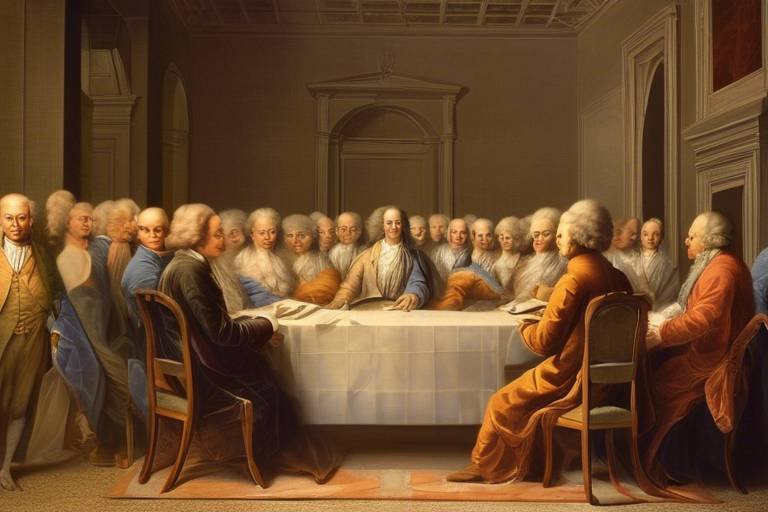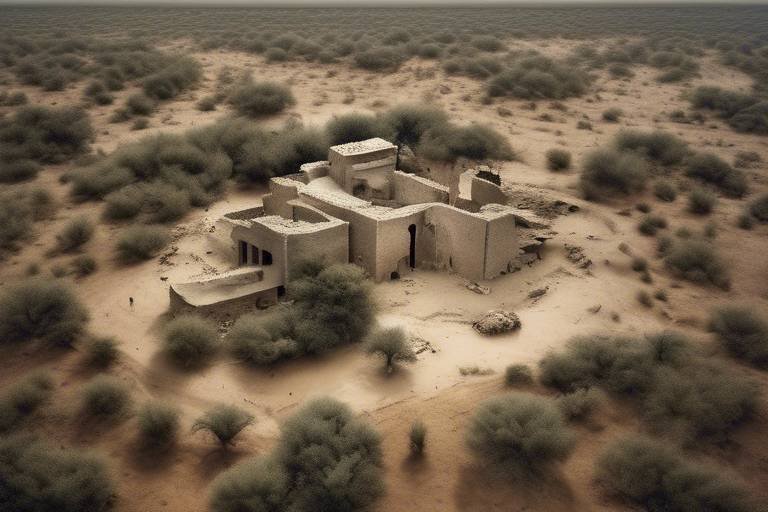The Legacy of Mithraism in the Roman Empire
Mithraism, a mystery religion centered around the god Mithras, left a lasting legacy in the Roman Empire that continues to intrigue scholars and enthusiasts alike. The influence of Mithraism extended far beyond its secretive rituals and beliefs, shaping various aspects of Roman society and culture in profound ways.
Originating from Persian mythology, Mithraism found its way into the Roman Empire through military conquests and trade routes, gradually gaining popularity among soldiers and civilians alike. The enigmatic nature of Mithraic practices added an aura of mystique to the religion, attracting followers from all walks of life.
One of the defining features of Mithraism was its elaborate rituals and practices, including initiation ceremonies that symbolized rebirth and spiritual enlightenment. Communal meals held in Mithraic temples fostered a sense of camaraderie among worshippers, reinforcing their dedication to the god Mithras.
The core beliefs of Mithraism revolved around the cosmic struggle between Mithras and the bull, symbolizing the eternal battle between light and darkness. Followers sought salvation through adherence to Mithraic principles, striving to achieve spiritual transcendence and divine favor.
Notably, Mithraism became closely intertwined with the Roman military, with many soldiers and officers embracing the cult of Mithras as a source of strength and protection. The god Mithras was often depicted as a powerful warrior, resonating with the martial ethos of the Roman legions.
Art and symbolism played a crucial role in Mithraism, with intricate representations of Mithras slaying the bull adorning temples and artifacts. These iconic images conveyed the mythological narrative of Mithras' triumph over adversity, inspiring worshippers to overcome their own challenges.
Despite its widespread popularity, Mithraism eventually faced a decline in the Roman Empire due to the rise of Christianity and shifting social dynamics. The spread of Christianity as the official religion of the empire marginalized Mithraism, leading to a gradual fading of its influence.
Nevertheless, the legacy of Mithraism endures in modern times, with echoes of its symbolism and mythology found in various cultural expressions. Artists, writers, and spiritual seekers continue to draw inspiration from the enigmatic allure of Mithraic imagery, keeping its memory alive.
Ongoing archaeological discoveries and research efforts shed new light on the practices and beliefs of Mithraism, offering fresh insights into this ancient mystery religion. Scholars strive to unravel the secrets of Mithraism, uncovering hidden truths buried beneath the sands of time.
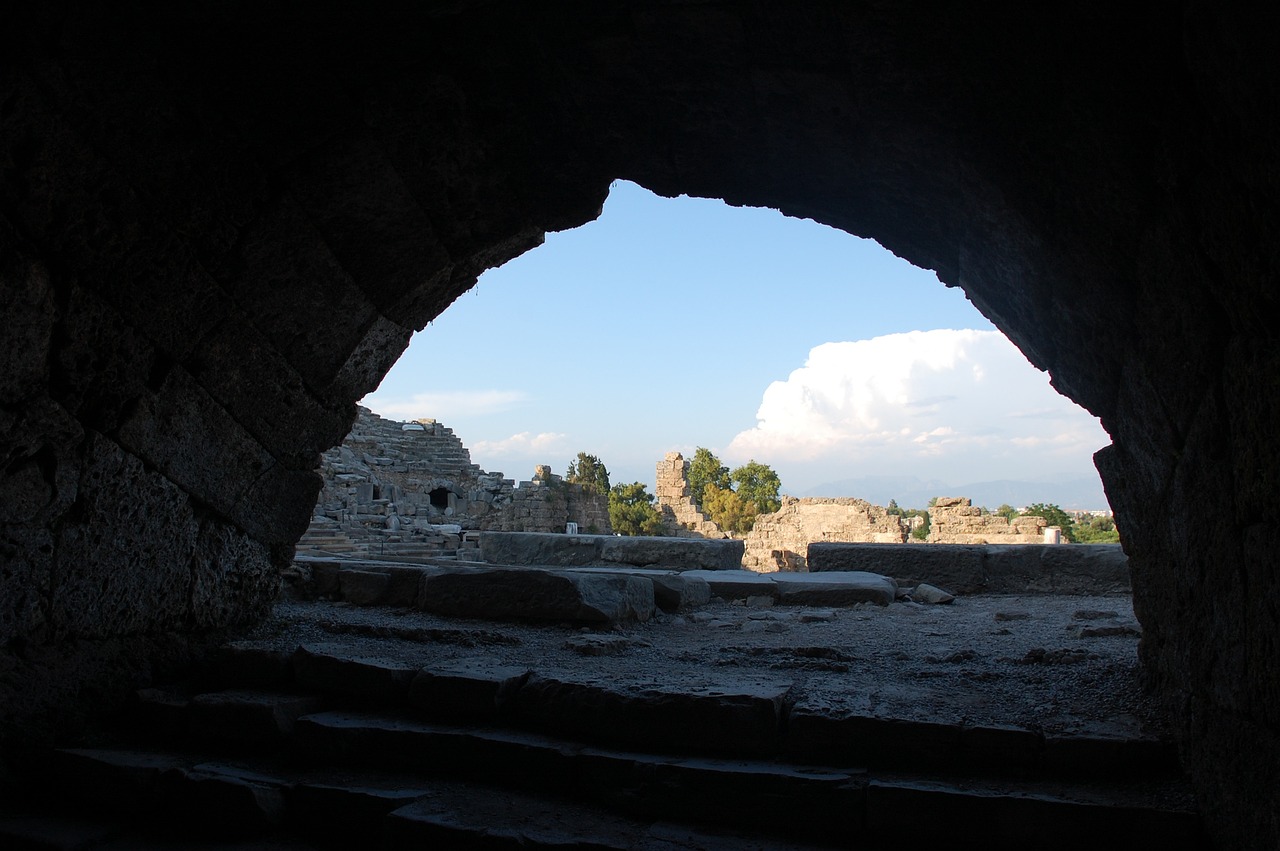
Origins of Mithraism
Mithraism, a mystery religion centered around the god Mithras, had a significant impact on the Roman Empire. Its rituals, beliefs, and iconography influenced various aspects of Roman society and culture.
The origins of Mithraism can be traced back to ancient Persian mythology, where Mithras was a deity associated with the sun and light. The religion spread to the Roman Empire through military conquests and trade routes, gaining popularity among soldiers and merchants.
One of the key features that distinguished Mithraism from other Roman religions was its secretive nature, with initiation ceremonies held in underground temples called Mithraea. These rituals often involved symbolic acts related to the cosmic struggle between Mithras and the bull, representing the triumph of light over darkness.
As Mithraism spread throughout the Roman Empire, it absorbed elements from other cultures, adapting its beliefs and practices to suit local traditions. This syncretic approach contributed to the religion's popularity and longevity.
Despite its foreign origins, Mithraism resonated with many Romans due to its emphasis on loyalty, bravery, and the promise of salvation. The cult of Mithras offered a sense of community and purpose in an uncertain world, attracting followers from all walks of life.
Overall, the origins of Mithraism reflect a complex interplay of cultural exchange, religious syncretism, and individual spiritual seeking that left a lasting imprint on the Roman Empire.

Mithraic Rituals and Practices
Mithraism, with its enigmatic rituals and practices, held a profound influence within the Roman Empire. Central to the Mithraic experience were the initiation ceremonies, shrouded in mystery and known only to the initiated. These rituals often involved symbolic actions and sacred objects, creating a sense of belonging and spiritual connection among followers.
One of the most significant practices in Mithraism was the communal meals, where members gathered to partake in shared food and drink. These gatherings fostered camaraderie and solidarity among the worshippers of Mithras, reinforcing the sense of community within the faith.
The Mithraic temples, known as Mithraea, served as sacred spaces where these rituals and practices took place. These underground sanctuaries were adorned with intricate frescoes and statues depicting Mithras in various mythological scenes, adding to the mystical allure of the religion.
Within the Mithraic belief system, the act of slaying the bull held profound symbolic significance. This mythological event represented the eternal struggle between light and darkness, good and evil, with Mithras emerging victorious, symbolizing the triumph of righteousness over chaos.
Furthermore, the concept of salvation played a central role in Mithraism, offering followers the promise of spiritual renewal and eternal life. Through participation in the rituals and adherence to the teachings of Mithras, believers sought to attain a higher state of being and transcendence.

Beliefs and Mythology
Mithraism, with its enigmatic beliefs and captivating mythology, held a profound influence within the vast expanse of the Roman Empire. At the core of Mithraism lies the cosmic struggle between the god Mithras and the sacred bull, symbolizing the eternal battle between light and darkness, good and evil. This symbolic imagery permeated every aspect of Mithraic beliefs, portraying Mithras as a powerful deity capable of overcoming the forces of chaos and bringing salvation to his followers.
Central to Mithraic mythology is the concept of salvation through initiation and spiritual enlightenment. Followers believed that by participating in the rituals and mysteries of the cult, they could attain a higher state of consciousness and transcend the limitations of the material world. The rituals themselves, shrouded in secrecy and symbolism, served as a pathway to spiritual rebirth and a deeper understanding of the divine mysteries.
Furthermore, Mithraism emphasized the values of loyalty, courage, and self-discipline, reflecting the martial ethos of the Roman Empire. The cult of Mithras attracted a significant following among the military ranks, with soldiers and officers drawn to the god's image as a powerful warrior and protector. The rituals and beliefs of Mithraism provided a sense of camaraderie and solidarity among its adherents, reinforcing the bonds of brotherhood within the military hierarchy.
As Mithraism spread throughout the Roman Empire, its mythology intertwined with local traditions and beliefs, adapting to the diverse cultural landscapes it encountered. The cult of Mithras assimilated elements from various mythological pantheons, incorporating symbols and rituals that resonated with different communities. This syncretic approach allowed Mithraism to flourish and evolve, adapting to the needs and beliefs of its followers across the empire.
In conclusion, the beliefs and mythology of Mithraism offer a fascinating glimpse into the spiritual landscape of the Roman Empire, blending ancient Persian traditions with Roman symbolism and imagery. The enduring legacy of Mithraism continues to captivate scholars and enthusiasts alike, shedding light on a mystical and enigmatic religious movement that left an indelible mark on the history of the ancient world.

Mithraism and Roman Military
Mithraism, with its mysterious and captivating rituals, held a special place within the Roman military, attracting numerous soldiers and officers to its ranks. The structured hierarchy and discipline of the military resonated well with the hierarchical structure of Mithraic initiation ceremonies, creating a sense of belonging and camaraderie among its followers. The symbolism of Mithras as a powerful warrior deity appealed to the martial spirit of the Roman soldiers, offering them a sense of protection and strength in battle.
Moreover, the communal aspect of Mithraic practices, such as shared meals within the Mithraic temples, fostered a sense of unity and brotherhood among the military devotees of Mithras. These gatherings not only strengthened the bonds between soldiers but also provided a spiritual refuge amidst the harsh realities of military life. The rituals of initiation, with their symbolic significance and solemnity, instilled a sense of purpose and dedication in the followers of Mithras, mirroring the discipline and commitment required in the Roman military.

Art and Symbolism in Mithraism
Art and Symbolism played a crucial role in Mithraism, shaping the visual representation of the religion and its beliefs. One of the most iconic images associated with Mithraism is that of Mithras slaying the bull, known as the tauroctony. This scene symbolizes the cosmic struggle between good and evil, with Mithras representing light and the bull representing darkness. The act of slaying the bull is seen as a powerful metaphor for the triumph of righteousness over malevolence.
Furthermore, Mithraic art often depicted other mythological scenes, such as Mithras being born from a rock, the god sharing a meal with the sun god Sol, and Mithras ascending to the heavens in a chariot. These artistic representations not only served as visual narratives of Mithraic mythology but also reinforced the core beliefs of the religion.
The symbolism in Mithraic art was rich and layered, with each element carrying a specific meaning. For example, the torchbearers flanking Mithras in many depictions symbolize the eternal struggle between light and darkness, while the serpent coiled around the god's leg represents rebirth and regeneration. These symbols were not just decorative but held deep spiritual significance for followers of Mithraism.
Mithraic temples, known as Mithraea, were also adorned with intricate artwork and symbolic motifs. The layout of these temples often reflected the celestial hierarchy believed by Mithraists, with different chambers representing various levels of the universe. The walls of Mithraea were adorned with frescoes depicting scenes from Mithraic mythology, creating a sacred space for worship and contemplation.
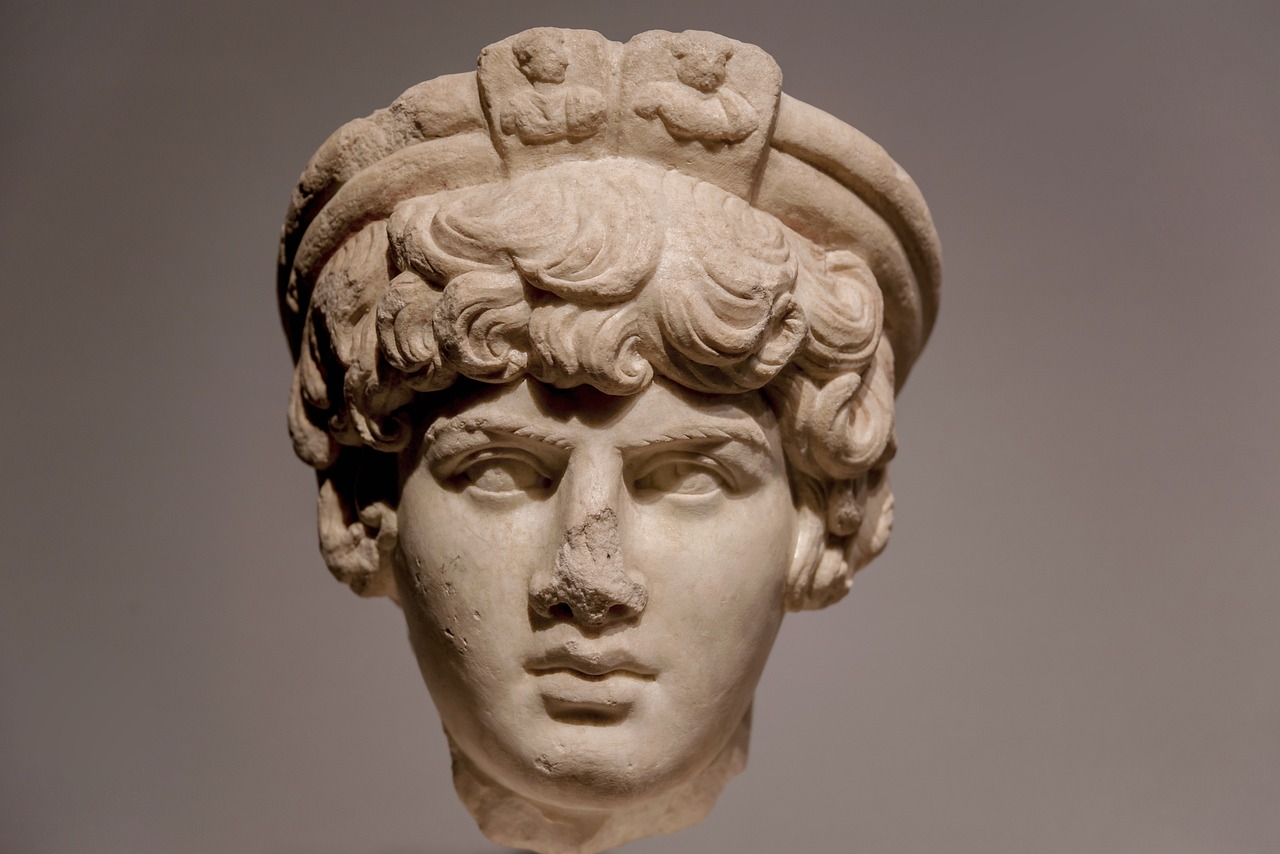
Decline of Mithraism
As the Roman Empire entered a period of significant transformation, the once powerful influence of Mithraism began to wane. The decline of Mithraism can be attributed to a combination of factors, with the rise of Christianity playing a pivotal role in its diminishing popularity. The spread of Christianity offered a new and compelling alternative to the traditional beliefs and practices of Mithraism, leading many followers to convert to the emerging faith.
Additionally, the changing social dynamics within the Roman Empire contributed to the decline of Mithraism. As the empire evolved and new cultural influences took hold, the appeal of Mithraism as a mystery religion began to fade. The rituals and beliefs of Mithraism, once shrouded in secrecy and exclusivity, struggled to compete with the more accessible and widespread teachings of Christianity.
Furthermore, the decline of Mithraism can also be linked to the shifting political landscape of the Roman Empire. With the growing influence of Christianity among the ruling elite and within the imperial court, Mithraism lost its status as a favored religion of the military and political classes. The decline of patronage and support from influential figures further weakened the position of Mithraism within Roman society.
Despite its gradual decline, the legacy of Mithraism continues to resonate in modern times, with echoes of its symbolism and mythology found in various cultural expressions. While the decline of Mithraism marked the end of an era in Roman religious history, its influence on art, symbolism, and spirituality endures as a testament to its enduring legacy.

Legacy of Mithraism in Modern Times
Mithraism, despite fading into obscurity with the decline of the Roman Empire, left a lasting legacy that continues to echo through modern times. The mystical allure of this ancient religion still captivates artists, scholars, and spiritual seekers alike, drawing inspiration from its rich symbolism and enigmatic rituals.
One of the most intriguing aspects of Mithraism's legacy is its influence on modern culture and art. The iconic imagery of Mithras slaying the bull, symbolizing the triumph of light over darkness, has been reinterpreted in various artistic mediums, resonating with themes of heroism and sacrifice.
Moreover, the spiritual essence of Mithraism has found echoes in contemporary spirituality, with some drawing parallels between the concept of salvation in Mithraic beliefs and modern ideas of personal transformation and enlightenment. The enduring appeal of Mithraism lies in its enigmatic nature, inviting individuals to explore the depths of their own spiritual journey.
Furthermore, the legacy of Mithraism can also be seen in the architectural remnants of Mithraic temples scattered throughout the former Roman territories. These archaeological sites serve as tangible links to the past, offering glimpses into the secretive rituals and practices of Mithraic followers.
As modern scholars continue to unravel the mysteries of Mithraism through archaeological discoveries and research, new insights emerge that shed light on the enduring impact of this ancient religion. The exploration of Mithraism's legacy in modern times serves as a testament to the timeless allure of its symbolism and mythology, transcending the boundaries of history to inspire and intrigue generations to come.
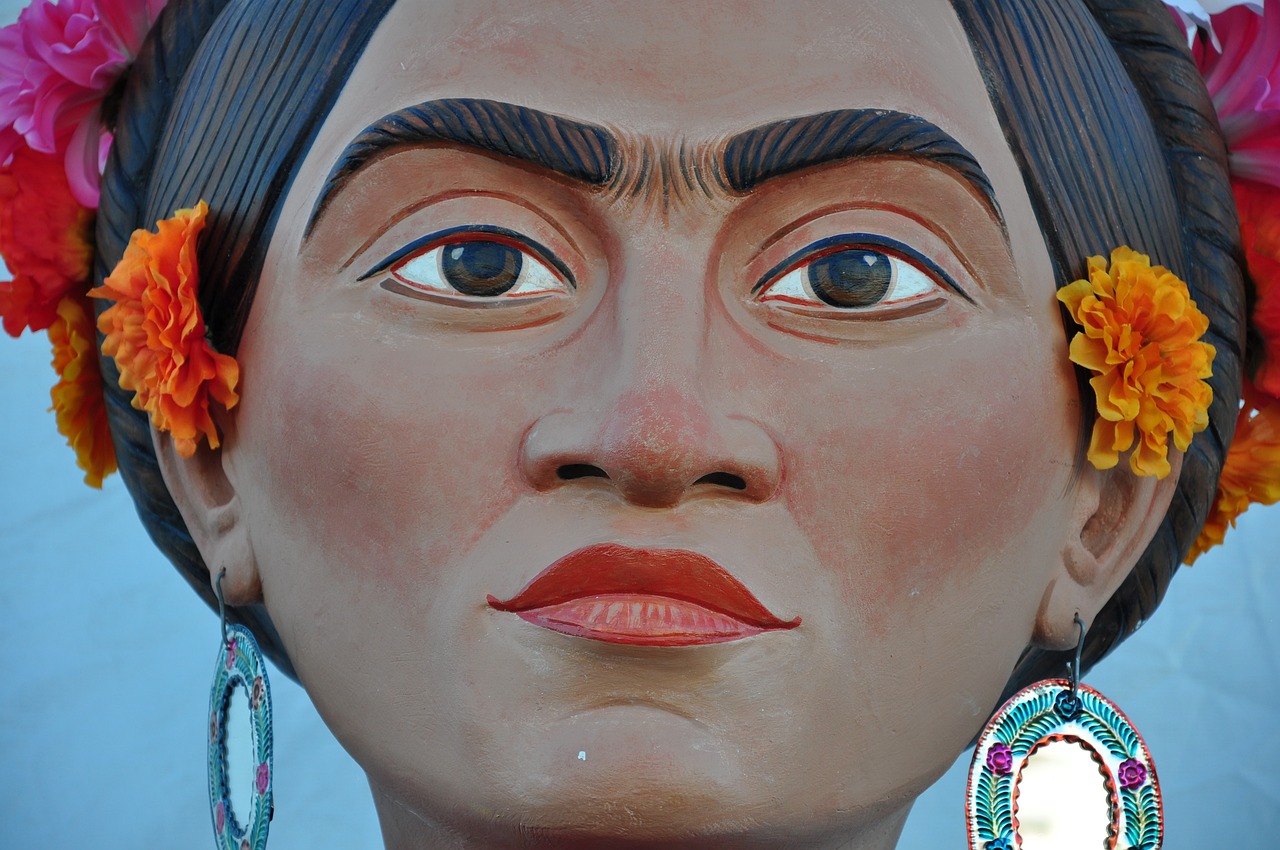
Archaeological Discoveries and Research
Archaeological excavations have unearthed fascinating insights into the practices and beliefs of Mithraism within the Roman Empire. Recent discoveries have revealed intricate Mithraic temples adorned with symbolic artwork depicting scenes of Mithras slaying the bull, a central myth in the religion. These findings have provided archaeologists with valuable clues about the rituals and ceremonies conducted within these sacred spaces.
Researchers have also uncovered artifacts such as statues, altars, and inscriptions dedicated to Mithras, shedding light on the religious fervor and devotion of followers. These discoveries have allowed scholars to piece together a more comprehensive understanding of how Mithraism functioned within the Roman social and religious landscape.
Through ongoing research and analysis of these archaeological findings, scholars are continually refining their knowledge of Mithraism and its significance in the broader context of Roman religious practices. By studying these remnants of the past, researchers are able to reconstruct the beliefs and rituals of this enigmatic religion, offering new perspectives on its role in shaping Roman society.
Frequently Asked Questions
- What is Mithraism?
Mithraism was a mystery religion centered around the god Mithras, practiced in the Roman Empire. It had secretive rituals and beliefs that were influential in Roman society.
- How did Mithraism originate?
Mithraism has its origins in Persian mythology, with the god Mithras being adapted into the Roman pantheon. It spread throughout the Roman Empire, especially among the military.
- What were the key rituals of Mithraism?
Mithraic rituals included initiation ceremonies, communal meals, and the worship of Mithras in temples. These rituals were shrouded in secrecy and known only to initiates.
- Why was Mithraism popular among the Roman military?
Mithraism appealed to the Roman military due to its emphasis on loyalty, strength, and bravery. Many soldiers and officers found solace and camaraderie in the Mithraic brotherhood.
- How did Mithraism decline?
Mithraism declined with the rise of Christianity, as the Roman Empire adopted Christianity as the state religion. Changing social dynamics and religious preferences also contributed to its decline.
- What is the legacy of Mithraism in modern times?
The legacy of Mithraism can be seen in modern culture, art, and spirituality. Symbolism and themes from Mithraic beliefs continue to influence various aspects of contemporary society.
- Are there any recent archaeological discoveries related to Mithraism?
Recent archaeological findings have provided new insights into Mithraic practices and beliefs in the Roman Empire. Ongoing research continues to uncover more about this ancient religion.



